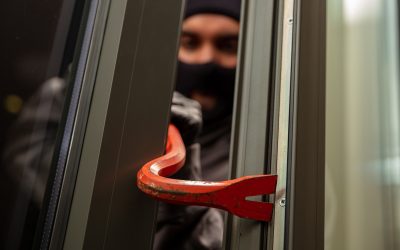The offence of “break and enter” holds a uniquely serious position within Canadian Criminal Law. It’s far more than a simple property crime; the courts and the Criminal Code of Canada treat it as a profound violation of personal security and the sanctity of private space.¹ For anyone who has faced this charge, the critical question is: Does a conviction for breaking and entering go on your criminal record? The answer is unequivocally yes. Any finding of guilt for a break and enter offence under the Criminal Code results in a permanent criminal record.² This isn’t just an administrative note; it’s a lifelong mark that can erect formidable barriers to employment, international travel, and immigration. However, there is a legal path forward. The Canadian justice system offers a mechanism known as a Record Suspension (commonly called a pardon) to seal this record, allowing you to reclaim your future. This guide will break down the offence, its consequences, and the steps to obtaining a Record Suspension.
The Breaking and Entering Charge: Understanding The Implications
A breaking and entering charge carries a weight that extends far beyond the courtroom. The law’s severe treatment, especially when a home is involved, is rooted in the principle of protecting not just property, but the psychological safety and inviolability of a person’s private domain. The potential for a Maximum Penalty of Life in prison for a home invasion isn’t just a deterrent; it’s a powerful statement condemning this specific type of violation.
When a person is charged, the crown prosecutor, representing Her Majesty in right of the province, builds a case. For serious charges that proceed by indictment, the accused may face a preliminary inquiry to determine if there is sufficient evidence to go to trial. During the trial, Victim Impact Statements can be presented, which provide the court with a detailed account of the emotional, physical, and financial impact the crime had on the victims. These statements can significantly influence sentencing, reinforcing the gravity of the offence.
The consequences of a conviction are severe and long-lasting. A record for “B and E” can:
- Block Employment: Many employers require criminal record checks, especially for positions of trust. A conviction for an offence involving dishonesty can be an immediate disqualifier for careers in finance, healthcare, education, or any field involving vulnerable populations.
- Restrict Travel: The United States, in particular, classifies Break and Enter as a “crime involving moral turpitude,” which can make you inadmissible for life. This can prevent you from crossing the border for work, vacation, or family reasons without a complex and costly U.S. Entry Waiver.³
- Create Immigration Hurdles: For non-citizens, including permanent residents, a conviction for a serious indictable offence can lead to inadmissibility, refusal of citizenship applications, and even deportation orders.
Beyond these major barriers, a criminal record can impact housing applications, volunteer opportunities, and professional licensing. The court may also impose ancillary orders such as DNA Orders, a Weapon prohibition order under Section 109 or 110 Prohibition Offences, or Forfeiture of Weapons or Firearms.⁴ In some cases, especially those involving organized crime or where a victim’s safety is at risk, the court might issue Publication Bans or a Witness Identity Non-disclosure Order. For the most serious offenders, a sentence may include Delayed Parole. These cumulative effects create a persistent state of disadvantage that only Record Suspensions can fully remedy.
Define Breaking and Entering
To understand the charge, one must understand its precise legal definition as outlined in section 348 (s. 348) of the Criminal Code of Canada.⁵ The offence is broader than its common name suggests, covering a range of actions that don’t necessarily involve forceful intrusion. Under section 348, a person is guilty if they:
- Break and enter a place with the intent to commit an indictable offence therein.
- Break and enter a place and actually commit an indictable offence therein.
- Break out of a place after committing an indictable offence or having entered with the intent to do so.
This legal structure covers the entire sequence of events, from unrealized criminal intent to escaping after a crime. The key legal terms are interpreted very broadly by the courts.
What is a “Break”?
A common misconception is that a “break” requires smashing a window or kicking in a door. Legally, this is not the case. The Criminal Code defines “breaking” as simply opening anything used to close or cover an opening.⁶ This means turning the knob of an unlocked door, pushing open a window that was ajar, or even walking through an open door without permission can constitute a “break”. Furthermore, section 350 (s. 350) of the Code states that entry gained by a threat, trick, or collusion with someone inside is also considered a “break and enter”.
What is “Enter”?
The legal threshold for “entry” is similarly minimal. According to section 350, entry occurs “as soon as any part of his body or any part of an instrument that he uses is within any thing that is being entered”.⁷ Reaching a hand through a window or inserting a tool through a mail slot is enough for a full legal entry. The entire body does not need to be inside the building.
What is a “Place”?
The definition of a “place” is comprehensive and is not limited to traditional buildings. The law protects a wide variety of enclosed spaces, including:
- A dwelling-house.
- A building or structure other than a dwelling-house.
- A railway vehicle, vessel, aircraft, or trailer.
- A pen or enclosure where fur-bearing animals are kept for breeding or commercial purposes.
Related offences often accompany a B and E charge. For example, if a person is found with tools like an automobile master key or other electronic equipment for criminal purposes, they could also be charged with possession of break-in instruments under s. 351(1).⁸ If they are caught on someone’s property at night, they could face a charge to prowl at night under s. 349. Often, the underlying Property offences that are committed or intended include theft under and over $5000 or mischief under and over $5000, also known as criminal mischief.
What is a “Break and Enter with Intent”?
The crucial mental element (mens rea) of Break and Enter is the “intent to commit an indictable offence” inside the location. Indictable offences are the more serious category of crimes in Canada, and in this context, they can include theft, criminal mischief, assault with a weapon, sexual assault, or even Breach of trust if the person was in a position of authority. It is this criminal intent that separates B and E from a lesser offence like simple trespassing.
A powerful tool for the Crown prosecutor is the legal presumption of intent found in s. 348(2) of the Criminal Code. This section states that if there is evidence an accused person broke and entered a place, that evidence, in the absence of “evidence to the contrary”, is proof they did so with the intent to commit an indictable offence. This effectively shifts the burden to the accused to provide a credible, non-criminal explanation for their unauthorized presence. A Criminal Defence lawyer must work to raise a reasonable doubt by presenting this “evidence to the contrary,” such as showing the person was intoxicated and entered the wrong home by mistake. This is a complex area of law where Charter rights are paramount and where Forensic evidence, such as fingerprints or DNA evidence, can be pivotal.
The Critical Distinction: Dwelling-House vs. Other Places
The most important factor in a Break and Enter case is the nature of the “place” that was entered. The Criminal Code draws a sharp line between a “dwelling-house” (a home) and any other location, affording a person’s home the highest level of protection.
- Break and Enter a Dwelling-House: When a home is involved, the charge is a straight indictable offence. The Crown has no discretion; they must proceed by the most serious form of prosecution. The maximum penalty is imprisonment for life. Critically, a judge cannot grant an absolute or conditional discharge for this offence. This means a conviction is an absolute certainty to result in a permanent criminal record, even if the sentence is a Suspended Sentence with probation.
- Break and Enter a Non-Dwelling-House: When the offence involves a commercial business, a motor vehicle, or a warehouse, it is classified as one of the Hybrid Offences. This gives the Crown prosecutor the choice to proceed either by indictment (with a maximum penalty of 10 years) or by summary conviction (for less serious cases, with penalties up to two years less a day in jail and/or a $5,000 fine). This decision, made by the Crown years ago, directly impacts your future eligibility for a Record Suspension.
This distinction underscores the importance of consulting with a Criminal Law Defence professional who can navigate the complexities of your case, whether it’s at the Ontario Court of Justice, the Superior Court of Justice, or even on appeal to the Supreme Court of Canada. They can help protect your rights and ensure the Crown must meet its burden of proof beyond a reasonable doubt. For those unable to afford a lawyer, Legal Aid Ontario and similar services in other provinces and territorial governments can be valuable resources.
The Path to a Clear Record
For those burdened by a criminal record for B and E, a Record Suspension is the only way to move forward. Governed by the Criminal Records Act, this process allows your record to be sealed from public view.⁹ While the path to a clear record exists, it is not a simple one. The application process is meticulous, involving strict timelines, complex legal forms, and coordination with multiple government bodies, including the RCMP, courts, and local police forces. Attempting this journey alone can be overwhelming and lead to costly errors or delays that prolong the burden of a criminal record.
This is where Canadian Pardons becomes your most important ally. Instead of navigating this confusing and stressful process on your own, you can have an experienced and dedicated team handle every single step for you. Canadian Pardons takes the weight off your shoulders by:
- Accurately obtaining all required documents, including your certified criminal record and local police records checks.
- Systematically gathering all court information needed for the application, no matter how old the conviction.
- Professionally preparing and submitting your application to the Parole Board of Canada, ensuring it is complete and correct.
- Managing all communication with government agencies on your behalf.
Choosing Canadian Pardons means choosing peace of mind. You are not just hiring a service; you are partnering with specialists who are committed to your future. We ensure the process is handled efficiently and correctly the first time, making your path to freedom as smooth as possible. Eligibility still depends on the type of offence and the full completion of your sentence, including all waiting periods: 10 years for an indictable offence and 5 years for summary offences after the sentence is completed.¹⁰ Let us clear the way, so you can move forward with your life.
Final thoughts
A conviction for Break and Enter is a serious matter with lasting consequences. It results in a permanent criminal record that can obstruct your path to employment, travel, and full participation in society. While the past cannot be erased, the future is not set in stone. The Record Suspension process is a powerful legal mechanism designed to provide a second chance. By partnering with Canadian Pardons, you can confidently navigate this journey, ensuring your application is handled with the expertise and care it deserves. Taking the first step with us is an empowering move toward reclaiming your future and moving forward with dignity and opportunity.
Sources
¹ Criminal Code, RSC 1985, c C-46, s 348.
² Pardons Canada, “What is a Pardon (Record Suspension)?”, accessed September 30, 2025,https://www.pardons.org/what-is-a-pardon-record-suspension/.
³ AllCleared, “Travelling to the US with a Break and Enter Charge,” accessed September 30, 2025,https://allcleared.com/travelling-to-us-with-break-enter-charge/.
⁴ Criminal Code, RSC 1985, c C-46, s 109, 110.
⁵ Criminal Code, RSC 1985, c C-46, s 348.
⁶ Criminal Code, RSC 1985, c C-46, s 321.
⁷ Criminal Code, RSC 1985, c C-46, s 350.
⁸ Criminal Code, RSC 1985, c C-46, s 351(1).
⁹ Criminal Records Act, RSC 1985, c C-47.
¹⁰ Parole Board of Canada, “Record Suspension Application Guide,” accessed September 30, 2025,https://www.peterboroughpolice.com/PBC_Record_Suspension_Application_Guide%202022.pdf.


